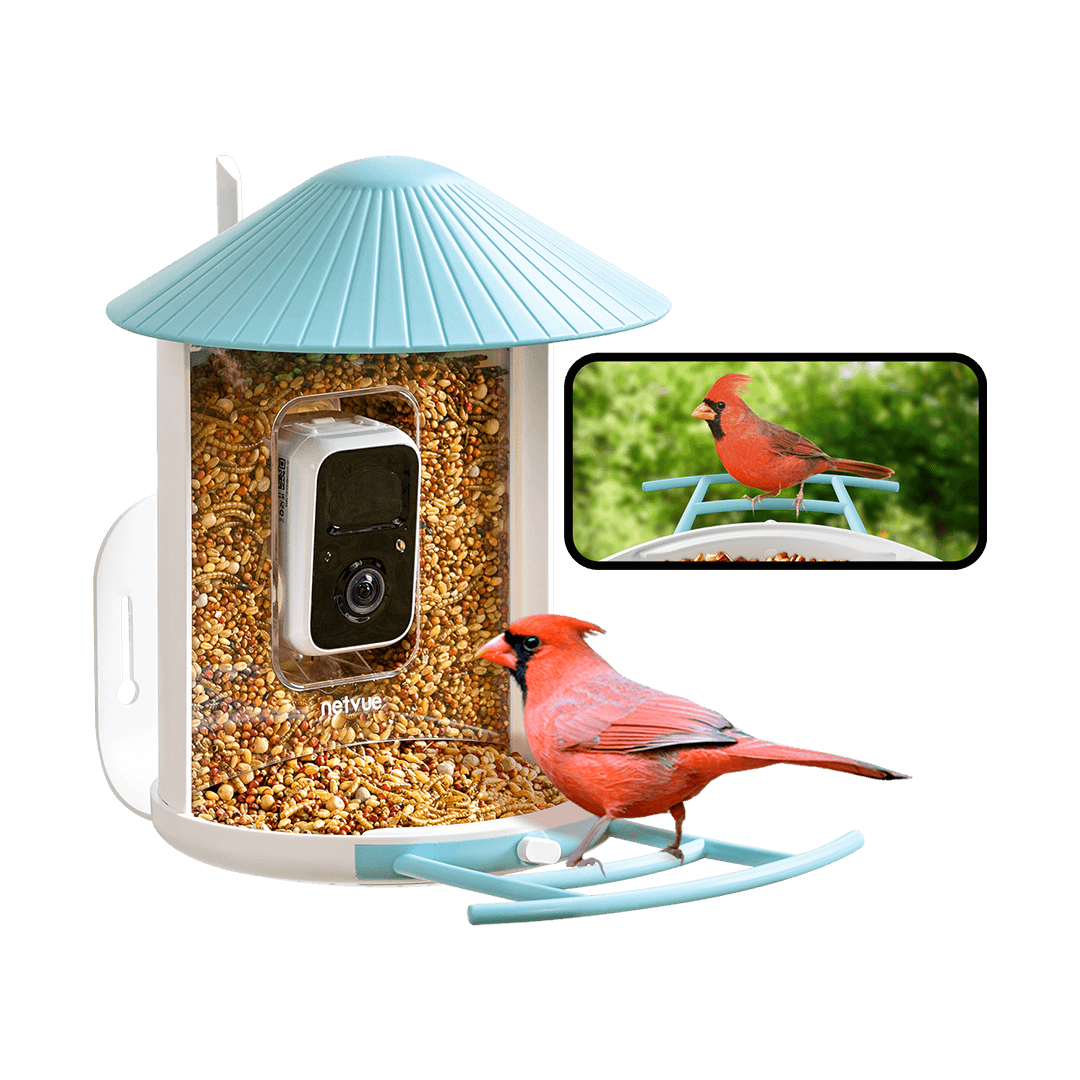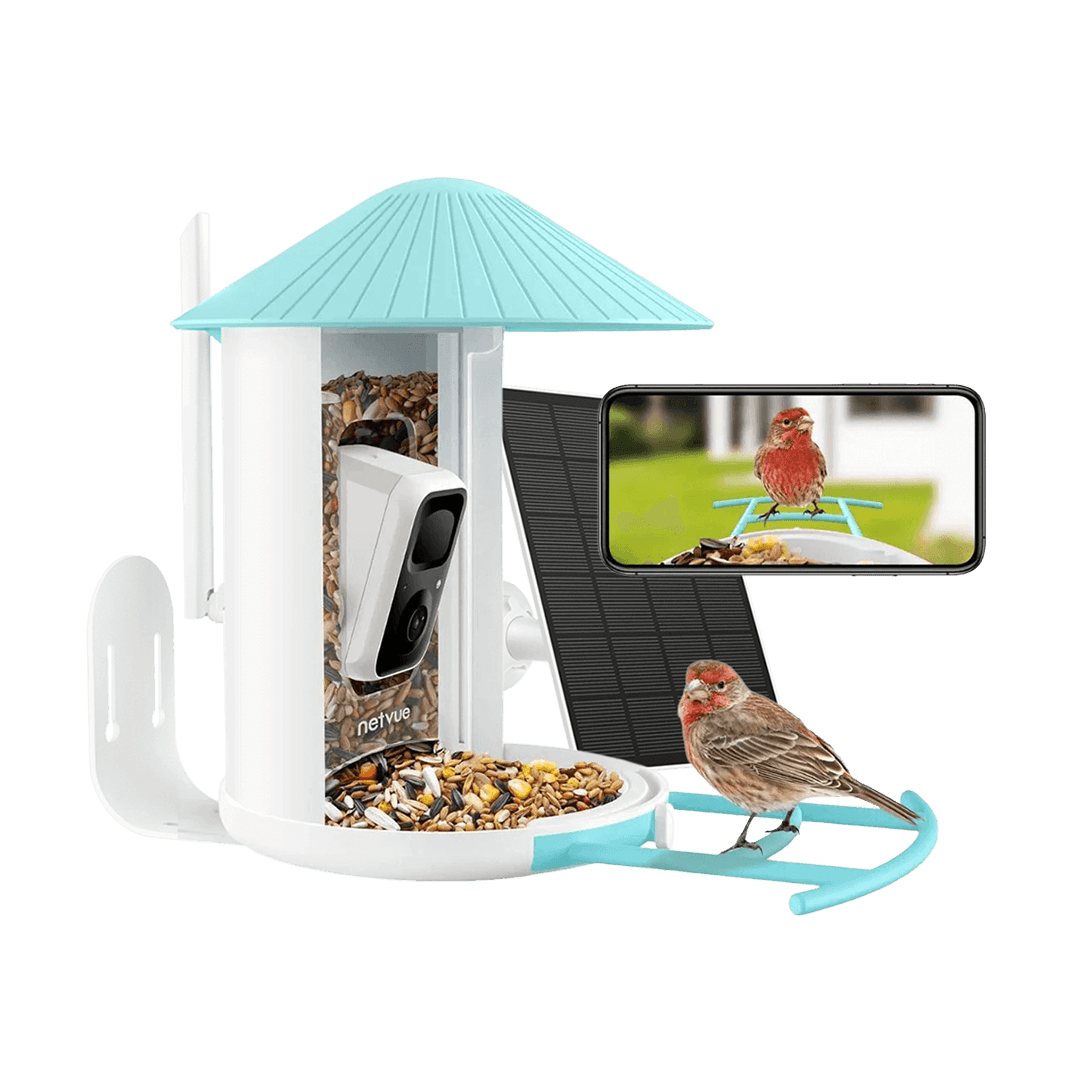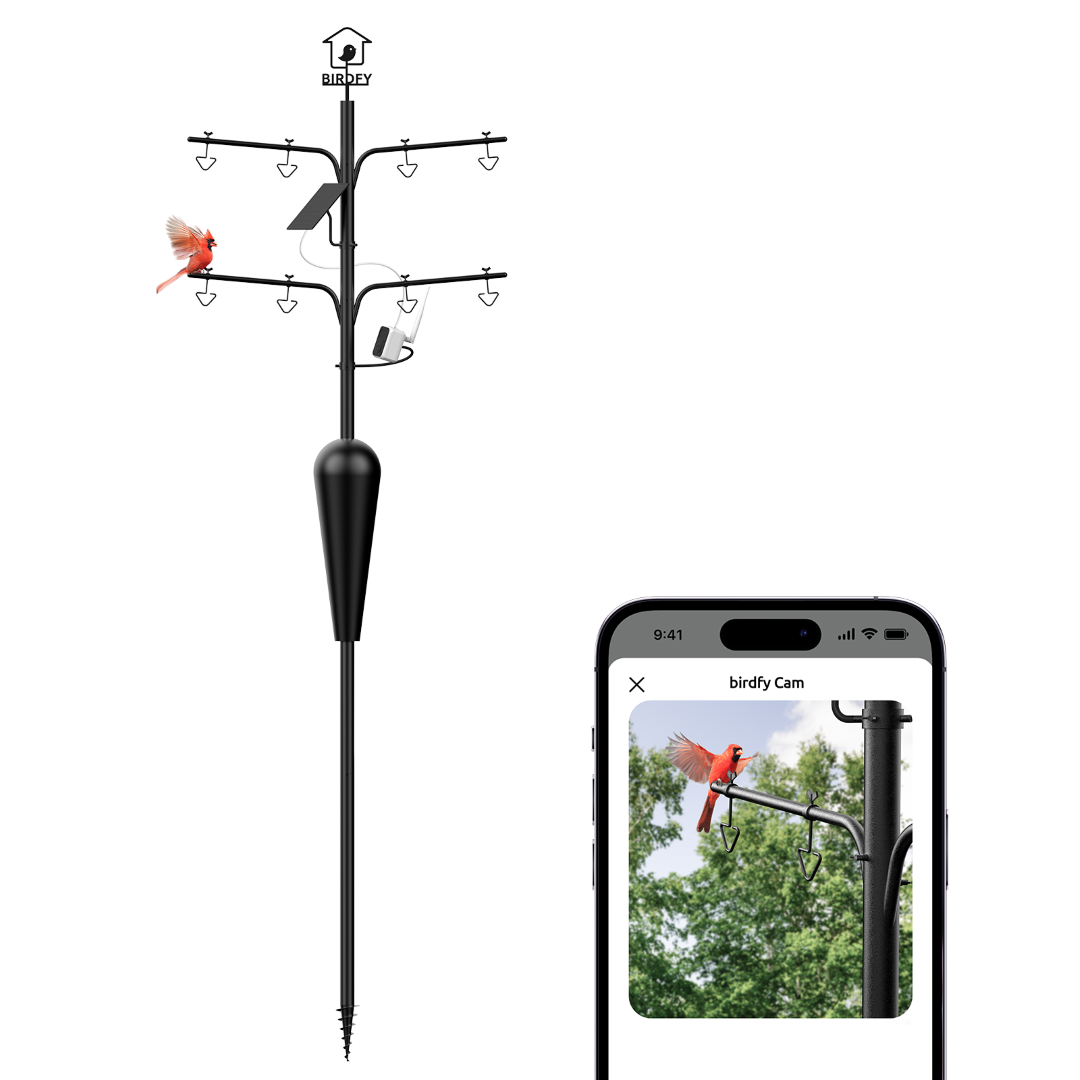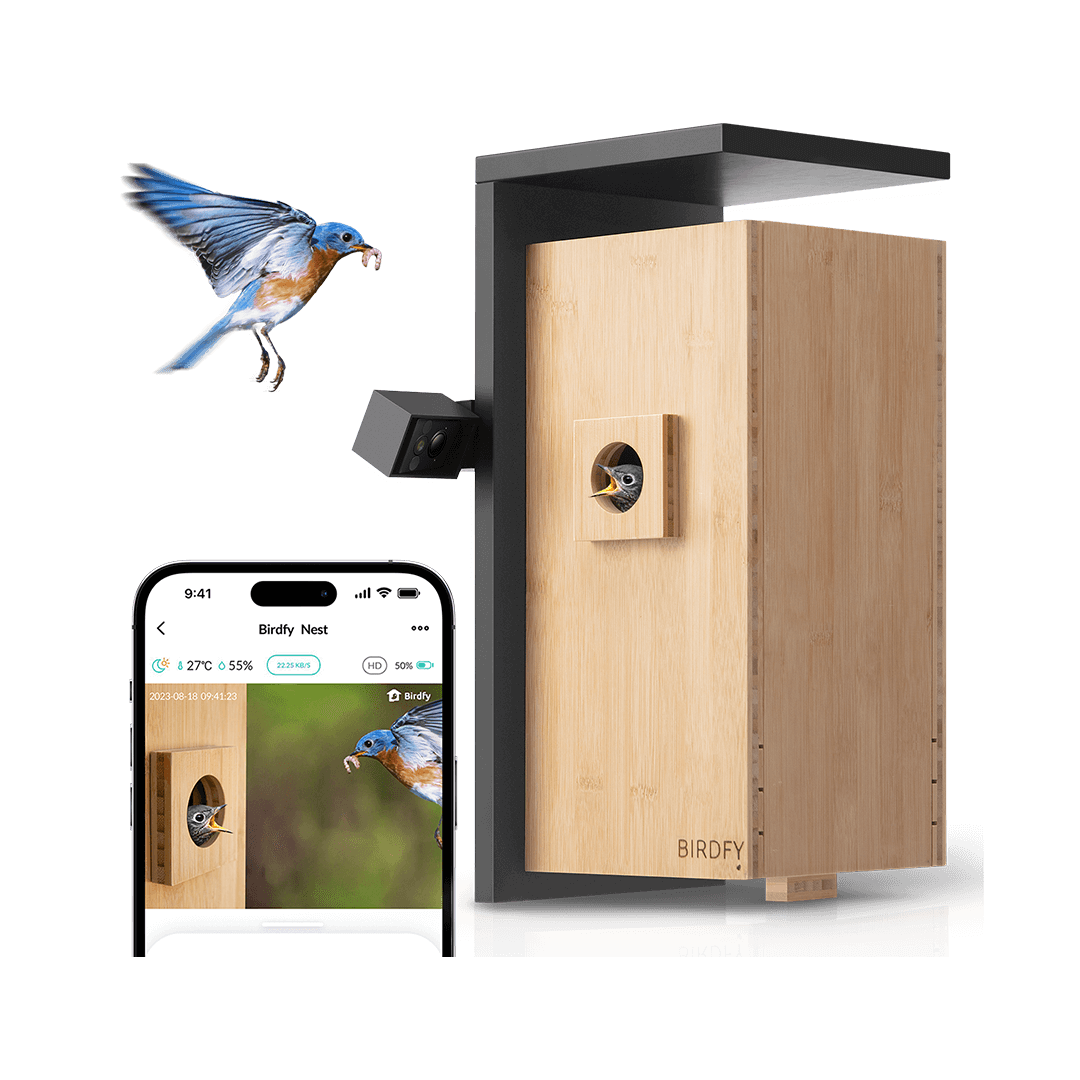Stephen Moss:Identifying Birds in your Backyard & Garden
Have you ever experienced a moment where you witnessed a beautiful bird but couldn't identify its name? If you are new to backyard or garden birding, you may find that identifying birds can be a daunting task. So here’s a step-by-step guide to identifying birds, which will help you get the most out of your Birdfy experience.
Why identify birds?
Why do we feel the need to identify – to give a name to – every bird we see? Why can’t we simply appreciate their beauty without knowing their name?
Of course we can – and do – admire and enjoy watching birds without always knowing which species we are looking at. But believe me, by working out what the identity of a bird – also known as its ‘ID’ – you can start to gain a real insight into its habits and behaviour, as well as learning more about birds in general. And, as with most things in life, the more you know the more satisfied you will be!
But isn't bird identification really difficult?
It can be. Some species are harder to identify than others, and a few even confuse the experts. But at the start, you don’t need to learn the name of every bird you see: begin by focusing on the common and familiar ones, and you’ll soon discover that the more you learn, the easier it gets!
First principles
- Don’t panic!
You notice an unfamiliar bird at your feeder, and all sorts of things come into your head. Before you know it, the bird has flown away, with you none the wiser as to its true identity. Chances are, however, that it will come back – and even if it doesn’t, you may have captured its image or video on your Birdfy!
- Take your time!
Bird identification is a slow and deliberate process, NOT a race. Indeed many experienced birders will tell you that bird identification is a lifelong habit – and even when you’ve been doing it for years, and think you know everything, a bird can still confuse you!
-
What do you already know?
Take a good look at the bird and see if it looks familiar. You might not know the exact species, but you probably have a pretty good idea of the family. For example, is it a dove, or a thrush, or a sparrow? Or does it look similar to one of those familiar groups? That can help you narrow it down, and stops you wasting time considering a huge range of potential species.
-
What’s the context?
You can often rule out a whole swathe of potential species, simply by considering a few key factors…
- LOCATION: where do you live? If you’re in the UK, it won’t be a hummingbird, a chickadee or a Cardinal – these species are only found in North America. Likewise, if you’re in the USA or Canada, it won’t be a European species like a Blue Tit, Song Thrush or Greenfinch.
- SEASON: what time of year is it? Some birds are resident all year round, while others are seasonal visitors, either seen during the spring and summer or autumn and winter. Getting to know which species appear at different times of year can help you quickly eliminate unseasonal birds.
- RARITY: rare birds are just that – rare! If you think a bird is a national or regional rarity – the kind that will attract hordes of birders peering through binoculars at your feeder – it’s almost certainly not!
-
Be methodical
Take your time, take a really good look at the bird through binoculars (or using your app), and if you are still uncertain as to its identity, take notes (using a simple pen or pencil and notebook, or a handheld digital recorder; and if you can, do a simple drawing or diagram pointing out the key field marks (see below for explanation). You can use these later to remind you of key details, or to show more expert birders to ask their opinion.
Six steps to a successful ID
I’ve put together a six-step process which should help you identify all but the trickiest birds. For some species, one or more of these categories – for example, colour, size or an obvious field mark – will be more useful than others. But all of these will be useful at some stage.
-
Size
Judging the exact size of a bird is almost impossible – unless you catch and measure it, you won’t be able to tell if it measures five inches from beak to tail, or six. But comparisons with familiar species, especially if they are on your Birdfy feeder at the same time, can be very helpful. For example, it is larger than a house sparrow, or smaller? Or about the same size?
You might find it helpful to group the birds that visit your feeder into size categories, for example:
-
Very Small (US: kinglets, chickadees, hummingbirds; UK: Goldcrest, Blue Tit, Chiffchaff)
-
Small (US: sparrows, finches, warblers; UK: sparrows, finches, Nuthatch, Robin, Great Tit, Blackcap)
-
Medium (US: Starling, Robin, thrushes, juncos, vireos, grackles, cowbirds, blackbirds, woodpeckers, orioles, Cardinal; UK: starling, thrushes, Great Spotted Woodpecker)
-
Large (US: doves, Blue Jay, crows; UK: pigeons, doves, Jay, crows, Ring-necked Parakeet)
There is of course some overlap between species here, but this should help you eliminate larger and smaller species during the ID process.
-
Shape and Structure
Is the bird you are looking at slim, like a warbler, or plump, like a robin? Is it stocky, like a starling, or elegant, like a dove? Does it stand upright, like a Starling or woodpecker, or hold itself more horizontal, like a blackbird? And is its bill long and slender, like insect-eating warblers, or stocky and powerful, like seed-eating finches and sparrows?
Just as with size, birds do vary in shape between species, but beware: a bird that looks slim on a warm summer’s afternoon might look plump on a cold winter morning, as in winter birds fluff up their feathers to trap air and keep warm.
-
Colour and Pattern
Most field guides, and indeed articles giving advice on bird ID, focus more on colour than any other factor. And for some species, this works brilliantly, especially if the bird’s name includes its predominant colour, such as Blue Tit or Blue Jay!
But some birds – often known by frustrated birders as ‘lbj’s’, meaning ‘little brown jobs’ are exactly that: mostly various shades of brown or grey, without any obvious bright colours to help you identify them.
That’s where Bird Topography can be helpful. Basically, this refers to the different parts of a bird: broadly its head, wings, back, breast, belly, tail, bill and legs; and more specifically, areas such as its crown or nape (the top or back of the head).
Taking careful notes of the topography of any unfamiliar or puzzling bird will rally help you work out what it might be.
-
Field Marks
This refers to any obvious distinctive features, which make the bird stand out from other birds on your Birdfy feeder. These include wing-bars (any, usually white, markings on the bird’s wing), crests (feathers that stick up on the bird’s crown), and any major areas of colour that stand out when you first see the bird. Again, take careful notes of these, which you can refer to later.
-
Behaviour
Different birds usually behave in particular ways, and this can be very helpful when you are trying to identify them. For example, some species feed mostly on the ground, and will mostly hop from one place to another (though Starlings walk, more like us!) Some will briefly flutter or hover in the air as they approach the feeder, while others will not.
Different birds also behave differently when visiting bird feeders, where there is usually a ‘pecking order’. Some species are dominant, staying on the feeder for several minutes at a time until they have eaten their fill; others are shy and nervous, flying in, grabbing a seed and then flying straight off again.
Larger birds like jays and woodpeckers tend to dominate the smaller ones, though some little birds – like Blue Tits in the UK and hummingbirds in the US – are surprisingly feisty for their size, often seeing off much larger birds!
Getting to know the typical behaviour patterns of different species and groups of birds isn’t just a great way to identify them. It’s also the gateway to a whole new world of understanding, which can lead to a lifelong fascination with the lives of the birds in your backyard or garden.
-
Jizz
Experienced birders will look at a bird – sometimes a long way away, or only in silhouette – and immediately put a name to it. And they’re often right! But ask them why they thought the bird was that particular species, and they’ll often admit that even though they couldn’t see the bird’s colour, pattern or any obvious field marks, they identified it on its ‘jizz’.
What they mean by that is some kind of characteristic that meant it could only be that species. It’s rather like when you are walking along a street and you see someone approaching you at a distance. Well before you can see their face, or any other distinguishing features, you know it’s one of your close friends or family members. It might be something to do with their walk, or the way they hold their head or move their arms. But if you were asked how you knew who it was, you might simply say ‘I just knew’!
The word ‘jizz’ is often mistakenly said to have derived from an abbreviation used by pilots in the Second World War, referring to an aircraft’s unique ‘General Impression and Shape’, or ‘GIS’. It’s a superficially convincing explanation, until we learn that the British ornithologist Thomas Coward was the first to refer to a bird’s ‘jizz’, in his prototype field guide The Birds of the British Isles and Their Eggs. And that was over a century ago, in 1921!
Talking of field guides, birders have used these – and been very thankful for them – ever since the US bird artist Roger Tory Peterson published his pioneering A Field Guide to the Birds (of North America) in 1934, following it up with A Field Guide to the Birds of Britain and Europe, in 1954.
Since then field guides have evolved to include a whole range of illustrations (usually paintings and drawings, but sometimes photographs), while of course the Internet also provides a bewildering number of illustrated articles, photos and videos of virtually any bird you are ever likely to see.
A word of warning, though: field guides are an excellent aid to bird identification, but they can also be a dangerous shortcut, leading you to the wrong conclusion. Make sure you work out what you think a bird is first, and then use the guide to check your verdict. And that leads me on to…
Common pitfalls
Even an experienced birder can sometimes be foxed by a particular bird, so what hope does a beginner have? Yet there is usually a good reason why a bird might be puzzling:
-
Same species, different appearance
If a bird looks like a familiar species, but there’s something wrong with its colour and pattern, or it just looks ‘odd’, consider that it might be a young bird rather than an adult – young birds, especially when they have just left their nest, often look very different from their parents.
Or perhaps you are used to seeing this bird during the breeding season, but now it has moulted into its (often drabber a less colourful) winter plumage. And in some species, like the Chaffinch in Europe and Cardinal in North America, males and females look very different from one another.
Also consider whether the bird might be sick or injured – that might make it look very different from its healthy cousins. And sometimes birds have what birders call an aberrant plumage feature – for example they might be leucistic (lacking colour and so appearing very pale or even pure white) or melanistic (with too much pigment, and so appearing very dark or even black).
-
Different species, same or similar appearance
Some species look virtually identical to their close relatives, even though they are actually different species. In North America, Alder and Willow Flycatchers are very similar – and it may be impossible to assign a particular individual to one species or the other. The same is true in Britain and Europe with Marsh and Willow Tits – indeed so similar are the pair, that the Willow Tit was only discovered in Britain in the late nineteenth century, even though it had always been there.
-
Escapes
Many species of bird – especially colourful songbirds such as finches, or other striking families like parrots – are kept in captivity; and that means that some will either escape or be deliberately released into the wild.
Sometimes, like the European Starling in North America or the Ring-necked Parakeet in the UK, they will form successful breeding populations, and become as common, widespread and familiar as our native birds. But often they will be a one-off, their unfamiliarity causing confusion to anyone who comes across one.
As with any unfamiliar bird you see, take detailed notes and then check your field guides – or better still the Internet – and you should be able to identify the species.
-
Vagrants
Once in a while, an unfamiliar bird will turn up in your backyard or garden, and it won’t be a youngster, in unseasonal plumage, a sick or injured bird or an escape, but a vagrant. That is a bird that has gone off course, usually on its migratory journey, and ended up in a new and unfamiliar location, where it is classified as a genuine rarity.
For example in North America, species from further south – Mexico and Central America – may venture much further north than usual, and turn up in the USA or Canada; indeed with climate change this is becoming more and more frequent.
Likewise, in the UK, in autumn, North American warblers, sparrows, vireos, kinglets and orioles occasionally get swept eastwards across the Atlantic Ocean on the tail-end of hurricanes, and may sometimes be seen in gardens: indeed the very first record of yellow-rumped (then myrtle) warbler was on a bird-table in a garden in Devon, during the winter of 1954-55.
And finally…
If you are still stumped, or just want confirmation of the identity of a mystery bird, you can join our Facebook community to discuss or seek help from other bird enthusiasts. They will often know the answer, and are always willing to help; and I’ll also be checking the posts regularly and offering my own thoughts on a tricky ID!
You can also consider adding a Birdfy Feeder AI to your backyard or garden - every bird that visits your feeder will be directly identified and recorded, enabling you to enjoy a smart birdwatching experience!






